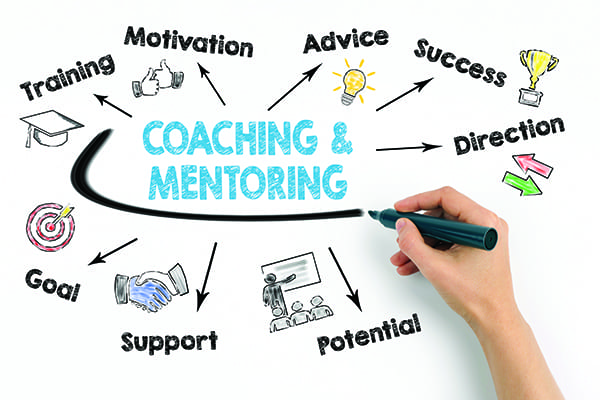The power industry faces many challenges, which require a dedicated workforce to overcome. How can a company get everyone pulling in the same direction? It starts with a strong culture.
The electric utility industry has recently found itself in a state of evolution as it adapts to a changing marketplace characterized by rapid technological innovation and shifting customer demands. A recent rise in mergers and acquisitions (M&A) in the industry has also added pressure on utilities to invest effort and finances in areas that will position them to be more competitive and productive in the coming years.
One area worthy of attention and investment that addresses these challenges, but often not given adequate consideration, is ensuring a successful integration when a utility completes M&A activities with another company. Frequently, such integration efforts look good on paper, but in practice, result in a confusing mess of “sub-cultures” with fragmented policies, systems, and values across the new, indifferent organization. This threatens a utility’s efficiency and the value of its acquisition right out of the gate.
Typically, executives try to solve this integration challenge by allocating resources toward the development of new processes to effectively combine the two entities. But while certain new processes are necessary and effective, some aren’t. Also, new policies tend to be added without reevaluating whether existing procedures are still needed or even relevant within the newly merged organization. This frequently results in adding new policies, designed without organizational engagement, adding a level of complexity and burden on an organization that does not understand (or automatically commit) to these changes.
Focus on People and Culture
By and large, the key to successfully improving efficiency and productivity of a company, whether newly merged or not, lies in focusing on its people and building a strong culture within the organization. By striving to integrate workers company-wide through cross-teaming efforts, dynamic and multi-faceted communications, and development of appropriate skillsets, organizations are better able to unlock value and drive sustainable results.
Transforming a company’s culture requires ongoing effort, especially among its leaders. It isn’t something that can simply be delegated. Everyone needs to be on board and actively participating, from the C-suite to plant operators and work crews. Here are four things companies can do to make cultural transformation successful.
Role-Model and Champion Desired Behavior. Leaders must “walk the talk” and demonstrate the change they want the company to achieve. Simply telling workers what they need to do isn’t enough. Leaders must regularly communicate their new vision and goals for the company, take the time to listen and get input, and take actions that are visible to workers showing how they, too, are marching toward that vision.
Being effective role models also requires leaders to motivate employees to work toward a common goal. This can be done through affective leadership or facilitative leadership. It is all about influencing change among workers, not forcing it. Tapping into the hearts and minds of employees, or demonstrating the right behaviors that empower them, can sometimes be different or difficult for leaders to do.
“Management” is typically associated with ensuring execution of and compliance with structures, processes, and systems. There is usually a consequence associated with non-compliance. But neuroscience tells us that people make most decisions based on feelings and emotions. Assigning and supporting employees’ ownership to solve discrete problems will empower them to take ownership. Connecting with workers in a personal way will motivate them to value the change being sought and make that change more likely to “stick.”
Emphasize Why Changes Are Needed. Keep the company engaged and focused on why changes are necessary and the employees’ role in them. Simply put, keep the organization engaged on the big picture and its impact on their reality. Stay future-focused. Keep everyone mindful of the end goal, what the payoff will be, and why it is important that the company gets there. This will make the process of getting to that point, which could involve significant time and effort, much more meaningful and worthwhile. The point is to get buy-in across the workforce (Figure 1). This will enable a more successful cultural transformation, which in turn will allow the company to realize greater value and achieve higher performance more quickly.
 |
|
1. The importance of gaining buy-in from workers when implementing cultural changes within a company cannot be overstated. Having everyone on the same page is critical to success. Source: Shutterstock |
But it’s not just about top-down talking. Listening and engaging the organization in the future vision is equally important. Building a team mentality around the desired change is also critical. Engaging the organization from the bottom up will help develop an owner mentality in the organization. The ship of change will arrive at its destination much sooner if everyone is rowing in unison and feels in command of their boat. Make sure employees are not only aware of their roles and responsibilities, but how valuable and important their roles are, and the impact they have on their co-workers’ success and the company’s future goals. Knowing how they link to the overall vision will keep workers engaged and focused.
Develop Necessary Skills and Workers’ Confidence to Use Them. An essential component of cultural transformation is making sure workers feel they have the training and skillsets needed for their respective roles. This isn’t a plug-and-play exercise. It requires a thoughtful examination of the unique learning and development needs of the newly merged company. The various roles and functions within the organization, as well as levels of awareness, knowledge, and expertise required should all be assessed to develop an overall roadmap for building necessary skills and competencies among personnel. Only then can a learning and development curriculum be designed and executed.
But providing training is only half the battle. Giving employees the confidence to use and improve upon the skills they have learned requires continual coaching and on-the-job mentoring (Figure 2). Leveraging the experience of workers whose day-to-day responsibilities have given them unique insight into specific operations makes them ideal mentors. Engaging them in bottom-up communication in which they are encouraged to share their knowledge with company leaders also helps instill a sense of ownership in ensuring that skills learned by coworkers are used correctly. In this way, training becomes an ongoing process that benefits from frequent reinforcement, which in turn builds a stronger company culture.
 |
|
2. Mentors share expertise, instill values, help develop skills, and offer unique perspectives. Having the right mentors working within your organization can be instrumental to achieving long-term company goals. Source: Shutterstock |
Skill building applies to all levels of the organization. Workers will only show ownership and grow confident in their role to come up with practical solutions for their environment if leadership demonstrates the right behaviors to foster, enable, and support this.
Align Existing Systems to Reinforce the Cultural Change. You can’t achieve better performance by simply implementing new processes. Adding new processes and systems without taking a hard look at those already in place is a sure way to add further complexity to a company and slow the process of building a strong culture among workers. Not only that, it can actually add risk to an organization. It is critical to assess any redundancies in processes or systems that may exist and leverage the organizational experience. Systems should be integrated, complement each other, and be regularly reviewed for efficiency and effectiveness.
To sustain progress toward the company’s long-term vision and goals, strong governance processes should be implemented that involve the right stakeholders, prioritize key issues, engage the whole organization, celebrate milestones, and hold individuals accountable to keep momentum. Also, measuring and promoting outcomes can keep the workforce on track and focused. It is important to clearly identify key performance indicators and milestones to monitor progress, prevent frustration, and foster a collaborative spirit.
Speaking from Experience
Aside from helping our North American utility clients strengthen these elements, DuPont itself saw huge benefits of leveraging these cultural elements when it strengthened its operational culture. Over the course of six years, DuPont focused on engaging employees, driving and role-modeling the right mindsets and behaviors while aligning its systems. Strengthening company culture not only led to a more engaged organization, but also to improved efficiency and productivity, and ultimately a sustained transformation in business results.
While processes and systems have their place, they alone won’t improve an organization’s operational performance. In fact, they could result in a giant step backward. The key to achieving sustainable efficiency, productivity, and value generation, whether a utility has recently gone through M&A or not, is establishing a strong culture that is committed to the future vision for the organization.
DuPont Sustainable Solutions (DSS) is a leading provider of operations management consulting services that enable organizations to protect their employees and assets, realize operational efficiencies, innovate more rapidly, and build workforce capability. By leveraging its DuPont heritage, deep industry and business process expertise, and diverse team of expert consultants, DSS helps clients turn operations management into a competitive advantage. ■
—Jan Teuwen is principal consultant with DuPont Sustainable Solutions, and Patricia Hampel is business transformation and turnaround executive with DuPont Sustainable Solutions
(www.consultdss.com).
https://www.powermag.com/culture-is-key-to-optimizing-plant-efficiency/?pagenum=3